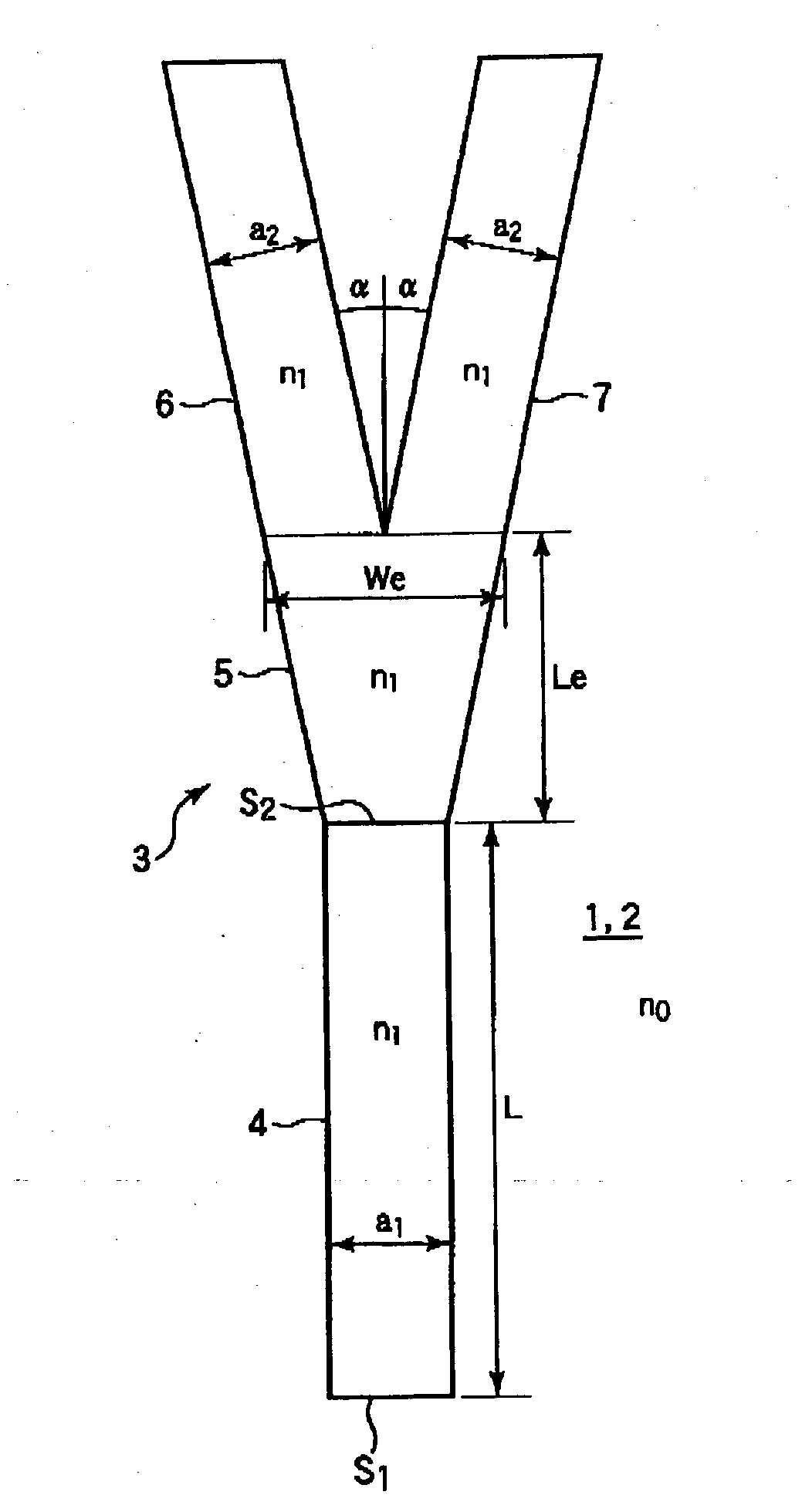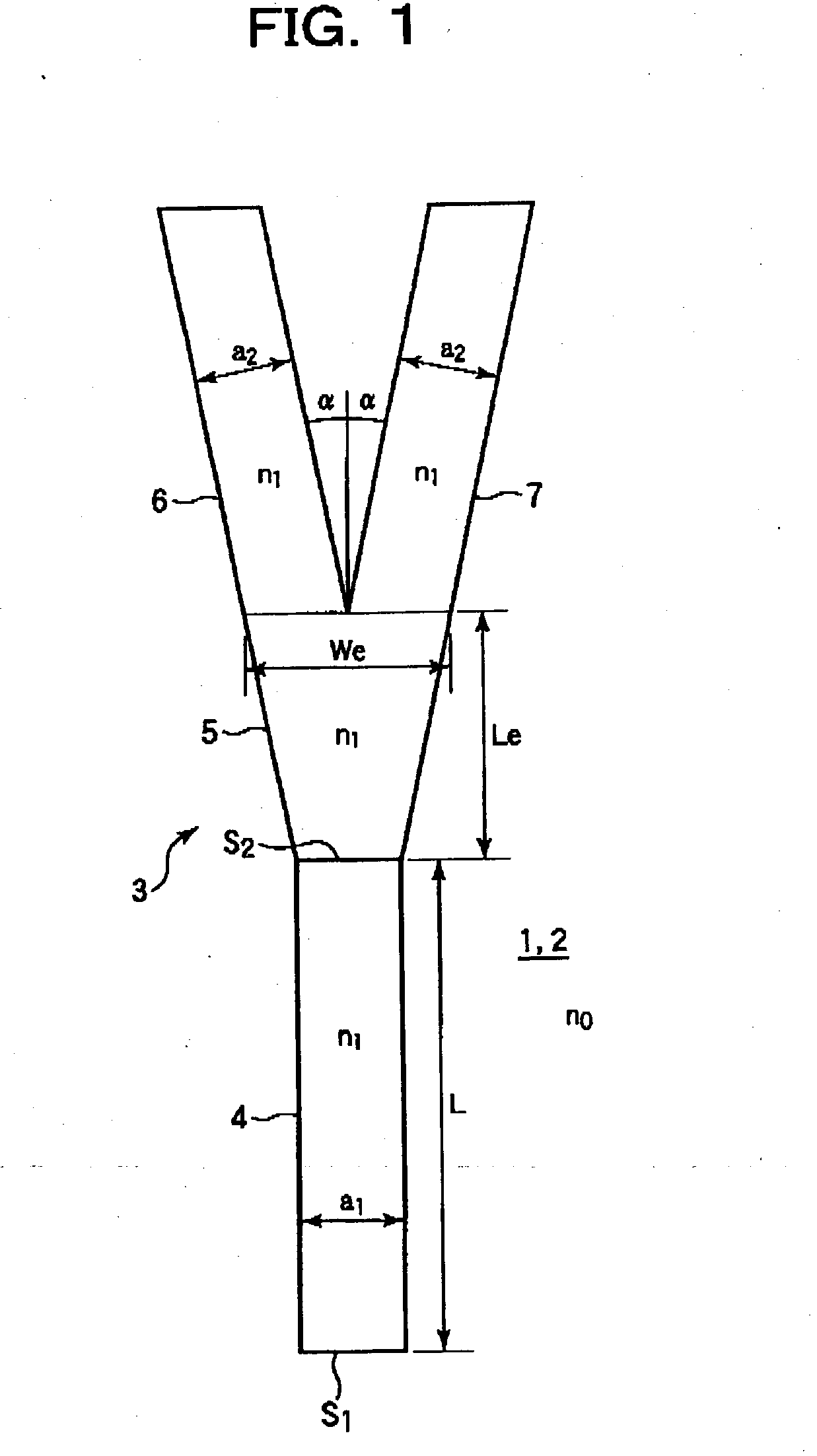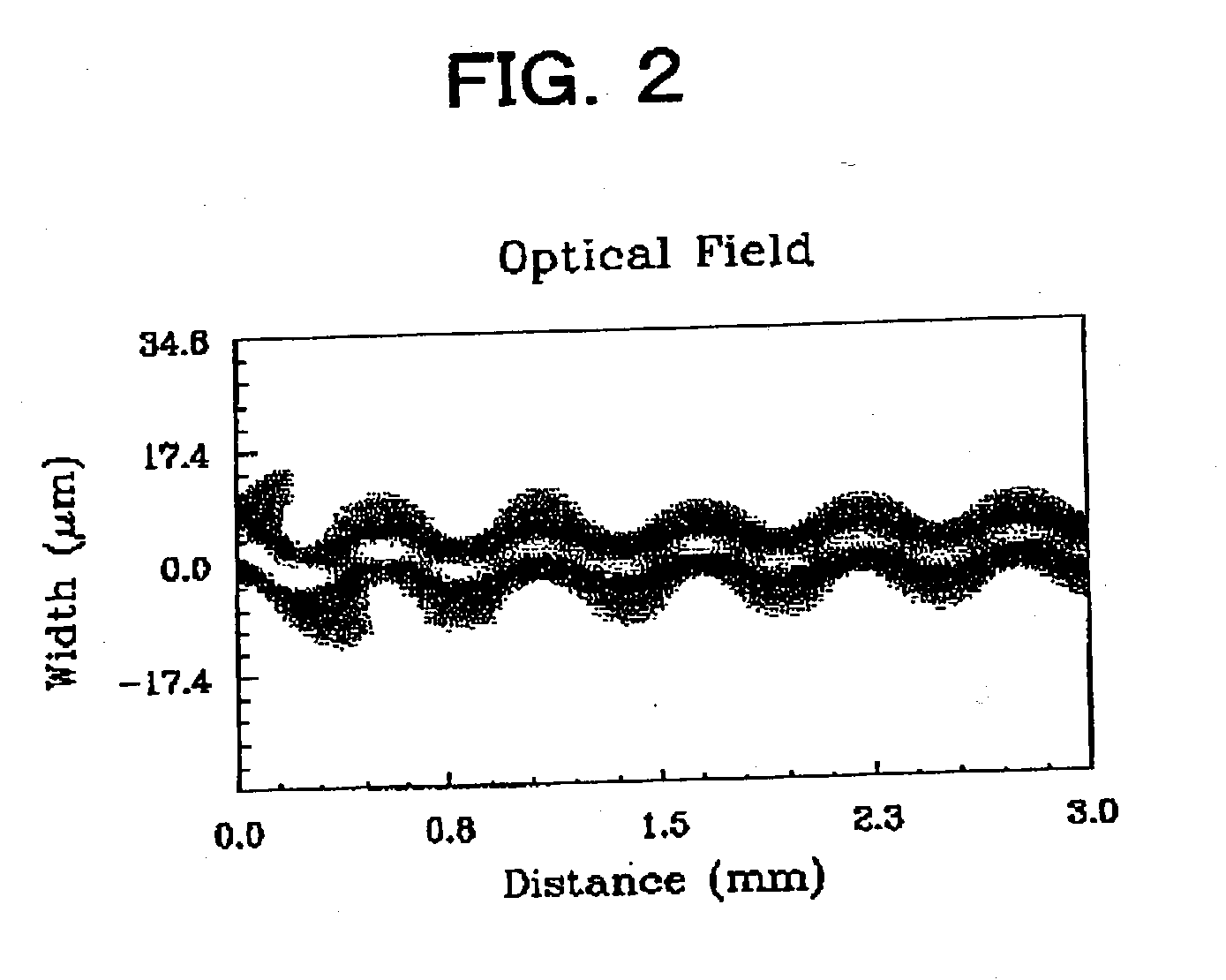Optical branching device
a branching device and optical fiber technology, applied in the field of optical branching devices, can solve the problems of troublesome connection operation of optical fiber and input optical waveguide, inability to avoid leaky modes, and difficulty in preparing an optimum design in view of actual leaky modes
- Summary
- Abstract
- Description
- Claims
- Application Information
AI Technical Summary
Benefits of technology
Problems solved by technology
Method used
Image
Examples
Embodiment Construction
[0040] Next, a concrete example will be described. When a specific refractive index difference .DELTA.n is made .DELTA.n=0.4%, a core dimension in which a single mode occurs is 7.5 (.mu.m).times.7.5 (.mu.m). As the structure of the optical branching device, the width of the incident optical waveguide 4 is a.sub.1=7.5 .mu.m, the length of the tapered optical waveguide 5 is Le=180 .mu.m, and the width of the end face is We=15 .mu.m. The width of each of the branching optical waveguides 6 and 7 is a.sub.2=7.5 .mu.m, and the branching angle is .alpha.=0.4.degree..
[0041] The calculation of a loss between the input and output ports (output light power / input light power) was made by the BPM (beam propagation method). In order to calculate the influence of leaky light, an initial excitation light distribution was made to have a Gaussian shape, and an offset (.diamond-solid. 0.2 .mu.m, .box-solid. 0.4 .mu.m) was given to the center axis of the optical waveguide to intentionally generate a mo...
PUM
 Login to View More
Login to View More Abstract
Description
Claims
Application Information
 Login to View More
Login to View More - R&D
- Intellectual Property
- Life Sciences
- Materials
- Tech Scout
- Unparalleled Data Quality
- Higher Quality Content
- 60% Fewer Hallucinations
Browse by: Latest US Patents, China's latest patents, Technical Efficacy Thesaurus, Application Domain, Technology Topic, Popular Technical Reports.
© 2025 PatSnap. All rights reserved.Legal|Privacy policy|Modern Slavery Act Transparency Statement|Sitemap|About US| Contact US: help@patsnap.com



